Review of the Day: Gods of Manhattan

Gods of Manhattan
By Scott Mebus
Dutton (a division of Penguin)
$17.99
ISBN: 978-0-525-47955-0
Ages 9 to 14
On shelves now
Fantasies for children that are set in New York take the surreal aspects of the city itself and extend them to their natural extremes. Luli Gray’s, Falcon’s Egg discussed the possibility of dragons in Central Park (and Nancy Springer’s Dusssie did the same thing with Gorgons). Changeling by Delia Sherman covered a range of magical areas, from Broadway to the very sea. And Neal Shusterman’s Everlost did some questionable, if original, things with the Twin Towers. The difference between these and Gods of Manhattan is that it aims higher . . . and falls further as a result. A set of ill decisions that could easily have been avoided combined with an ending that is oddly insulting takes this otherwise fun fantasy into dangerous sketchy territory. It will be popular, but it is too flawed to support entirely.
Thirteen-year-old Rory Hennessy has a weird kind of gift. As far as he knows, all his life he’s been able to see through the tricks and machinations of professional magicians. But when a strange fellow calling himself Hex comes to Rory’s house to do a show for the boy’s little sister Bridget, the man manages to open Rory’s eyes in a way he’s never known. Now he can see stone gargoyles swallowing pigeons whole and cockroaches riding rats like they were horses. A whole new world has revealed itself to Rory and it is a world that goes by the name of Mannahatta. As it turns out, Rory is what’s known as a "Light", and he is a most uncommon fellow. Here in Mannahatta, all those historical figures that made their imprint on the island’s memory, be it big or small, are remembered as Gods of Manhattan evermore. People like Babe Ruth, Frederick Douglass, and Walt Whitman are ruling the city, but dark dealings are afoot. A group of Indian spirits from the Munsee tribe is trapped in Central Park. Now it is up to Rory to free these spirits and avoid the evil machinations of a mysterious Willem Kieft before everything goes terribly wrong.
ADVERTISEMENT
ADVERTISEMENT
Here are the assumptions that I was making when reading this book. If you don’t agree with them, then you probably won’t have the same problems with the story that I did. So, the idea is that if you are famous in New York and remembered by its residents then you remain as a kind of god after your death. Fair enough. What’s more, even if you’ve ended up a kind of urban legend or vague story, you can still be a god. There’s a god of shoplifting, a god of guilt, and so on and so forth. There are quite a lot of gods in this book too. In fact, if you turn to the Cast of Characters at the beginning you can see the names of the top twelve. The Council of Twelve consists of the twelve gods that rule all the others. Now take a close look at these guys. Take a good long look. Do you see anything strange about them? Could it be that they are all white, with the exception of "Caesar Prince", who happens to be a made up character? This seemed a tad odd to me. I mean we’re talking about the gods that rule Manhattan. Since when was Manhattan ever an all-white burg? So I took a closer look at the book and here are the stats I came up with.
Number of black characters in the book: 3 (two made-up, one a real historical figure)
Number of Jewish characters in the book: 1 (a murderer who is killed right at the start)
Number of Dominican characters in the book: 0 (in spite of the fact that the hero lives in Inwood)
Number of Hispanic characters AT ALL in the book: 0
Number of Asian characters in the book: 0
Curiouser and curiouser. How on earth does a person go about writing a book about the people who represent Manhattan and make almost all of them white? Then I took a closer look at exactly whom Mebus has selected to represent us. The Goddess of Trends is Zelda Fitzgerald. Hunhuna? Call me kooky, but wouldn’t Madame C.J. Walker, who New York schoolchildren actually learn about in school and who was black, be a better choice?
You might point out that Harry Potter and the Percy Jackson books aren’t exactly bastions of multicultural values either, but that’s not exactly fair. Harry Potter takes place in British boarding schools. Not New York. Percy Jackson takes place at camp. Not New York. New York City is as wonderful as it is precisely because of the multiple ethnicities and races that have built it up over the years. And when you write a book that discusses the gods of the city and then proceed to make almost ALL those gods white, you are doing a disservice to the very people who have helped to make Manhattan the way it is today.
The thing is, I can see schoolteachers in New York City gleefully plucking this book up to use in class. What better way to introduce kids to Walt Whitman, Peter Stuyvesant, or Adriaen van der Donck? But at the same time, what a throwback to old curriculums that ignored lesser known and important people. You’ll find no Percy Suttons here. No Madame C.J. Walkers. Not even an Italian like Fiorello H. LaGuardia.
ADVERTISEMENT
ADVERTISEMENT
And then there are the Indians. When I first picked up the book I was a little surprised to see a blurb on the back from Joseph Bruchac. Mr. Bruchac has certainly written a couple fantasies in his time (I’m a big fan of Wabi: A Hero’s Tale) but not so many that he’d be the first fellow you’d think of when you wanted to promote a fantasy novel. Usually a publisher would contact a Tamora Pierce or a Rick Riordan. But when I saw the Indians in this book it all fit together. Ah. Joseph Bruchac is Native American himself. And if people started saying that the Indians in this book were akin to the ones in Peter Pan what better argument to present them with than the fact that Joseph Bruchac himself approved? Truth be told, I was never comfortable with the Indians for most of this book, but I decided to play along. If Mebus wanted to make some kind of a point about the island’s original inhabitants (all the while ignoring the non-white immigrants) who was I to object? So I read it through and everything was fine . . . until I got to the end.
Spoiler Alert: For those of you who wish to keep everything a surprise. Everybody ready? Okay. So for much of the book Rory’s quest is to find the objects that will allow him to free the Munsee tribe from their prison in Central Park. The villainous Willem Kieft has kept them there for years and the Indians have grown, quite understandably, more and more pissed off as a result. But just when the hero is about to free them, he is saved from making a terrible mistake. Rory has had a dream where a Munsee friend from his youth, Wampage, has told him that if he frees the Indians horrible things will happen. You see, because the Indians are so angry they want revenge on the people who have trapped them there. No surprise. So FOR THEIR OWN GOOD Rory is to keep them trapped against their will until they cool off a little and everything’s copacetic. I will repeat that: The white kid decides to keep the Indians trapped because otherwise they might just hurt themselves by being too angry. I was more than the teensiest bit shocked when I read this. Seriously? We can’t trust Indians to rule themselves wisely? They need intervention because otherwise they’ll do stupid things? Am I the only one who sees a problem with this?
The crazy thing is, there’s a lot to like here. In fact, if you were an average white kid reader, you might think this was a pretty cool book. There are paper mache bodies and lots of exciting chase and action sequences. The dialogue is tons of fun and the main character and sister are great kids to follow. I liked sentences like, "He knew she couldn’t see what he was seeing. Because he was going crazy and that’s not really a team sport." And to Mebus’s credit, he makes Alexander Hamilton the slimy fish he really was. And Aaron Burr and Willem Kieft as your villains? Inspired. Who could be a better New York duo (though Boss Tweed would have been my personal pick)? But if you delve even a little below the surface of the story you see how privileged, white, and patronizing the book gets at times. It just seems like an incredible waste. Mebus is clearly talented, and I have high hopes for his future books. I don’t know why nobody ever mentioned to him how insulting the book could feel at times. Maybe they just weren’t paying attention.
In the end, Mebus has written a book that is about a very interesting place, but it is not Manhattan. Anything above 110th Street (aside from an oddly gentrified Inwood seen here) is ignored entirely. New York is more than just the white residents that made it famous. It may well be that fantasy fans ignore these details and love the book for its snappy writing and crisp dialogue. For those of us who can see what’s missing, it’s a harder sell. A good concept and an interesting story, sure. But in the end a novel of this sort is the sum of its parts. And with significant parts missing, there’s only so much you can save. Hopefully we’ll see less simplified material from Scott Mebus in the future.
 Notes on the Cover: Well, it’s Brandon Dorman so you can’t go wrong there. That man can gussie up anything until its irresistible to the child that crosses its path. Already this year he put his particular spin on Ingrid Law’s Savvy. Gods of Manhattan has allowed him to illustrate the book both inside and out. You’ve a cool cover with its wilderness on one side and noticeable New York architecture on the other. The title itself is a lovely mix of old and new. It’s interesting how he’s made the hero a teeny tiny running figure while Fritz and his rat are more visible. But Rory is centered and the light from the sky is falling on him, so that’s where your eye travels after reading the title. The Indians for their part are in shadow and almost hidden but it’s gutsy seeing them right there. I can’t fault it, as it’s a good mix of old and new, much like New York itself. We’ll see what the kids think of it.
Notes on the Cover: Well, it’s Brandon Dorman so you can’t go wrong there. That man can gussie up anything until its irresistible to the child that crosses its path. Already this year he put his particular spin on Ingrid Law’s Savvy. Gods of Manhattan has allowed him to illustrate the book both inside and out. You’ve a cool cover with its wilderness on one side and noticeable New York architecture on the other. The title itself is a lovely mix of old and new. It’s interesting how he’s made the hero a teeny tiny running figure while Fritz and his rat are more visible. But Rory is centered and the light from the sky is falling on him, so that’s where your eye travels after reading the title. The Indians for their part are in shadow and almost hidden but it’s gutsy seeing them right there. I can’t fault it, as it’s a good mix of old and new, much like New York itself. We’ll see what the kids think of it.
Other Blog Reviews: Green Man Review, SF Site Review, and Fantasy Magazine
Other Reviews: School Library Journal and Kirkus
Filed under: Reviews
About Betsy Bird
Betsy Bird is currently the Collection Development Manager of the Evanston Public Library system and a former Materials Specialist for New York Public Library. She has served on Newbery, written for Horn Book, and has done other lovely little things that she'd love to tell you about but that she's sure you'd find more interesting to hear of in person. Her opinions are her own and do not reflect those of EPL, SLJ, or any of the other acronyms you might be able to name. Follow her on Twitter: @fuseeight.
ADVERTISEMENT
ADVERTISEMENT
SLJ Blog Network
One Star Review, Guess Who? (#202)
Exclusive: Giant Magical Otters Invade New Hex Vet Graphic Novel | News
Parsing Religion in Public Schools
Take Five: LGBTQIA+ Middle Grade Novels
ADVERTISEMENT

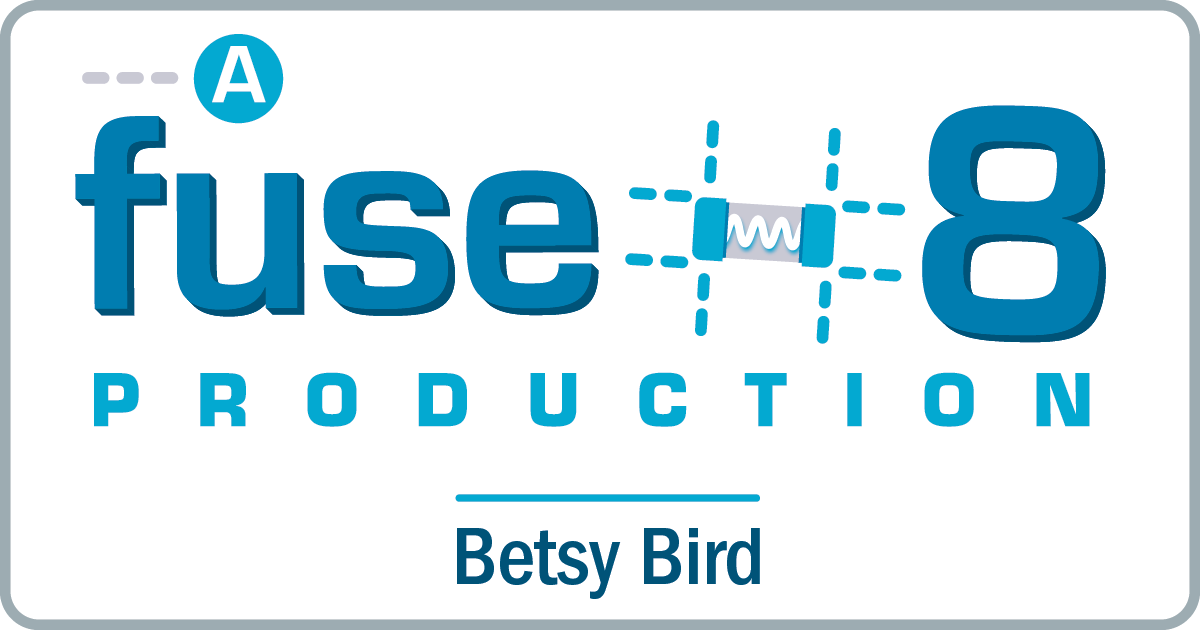

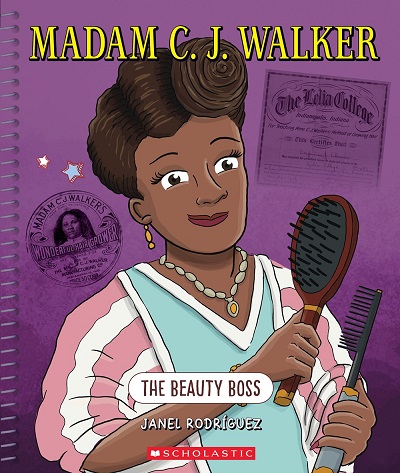
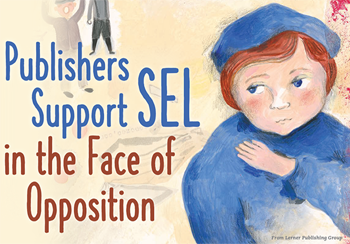
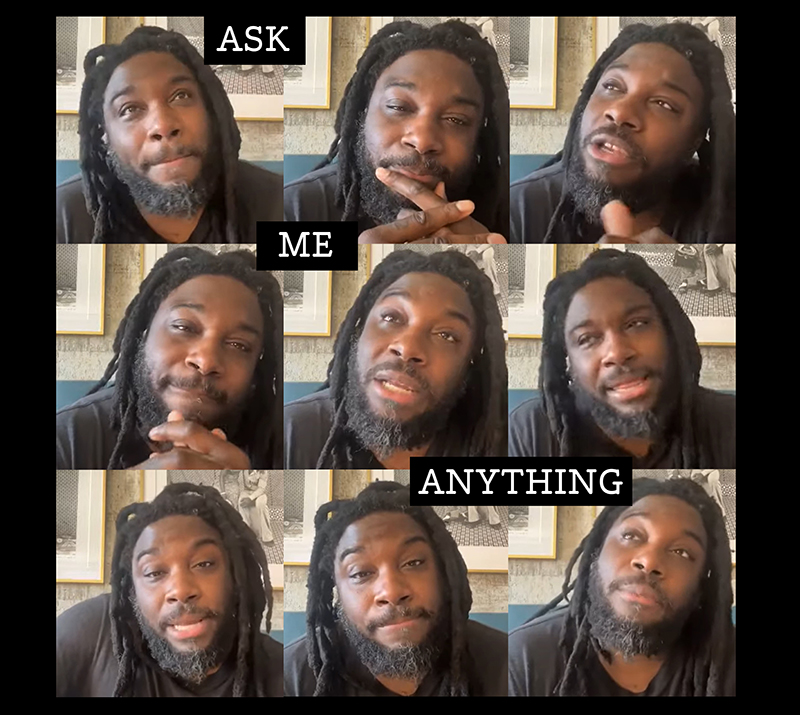

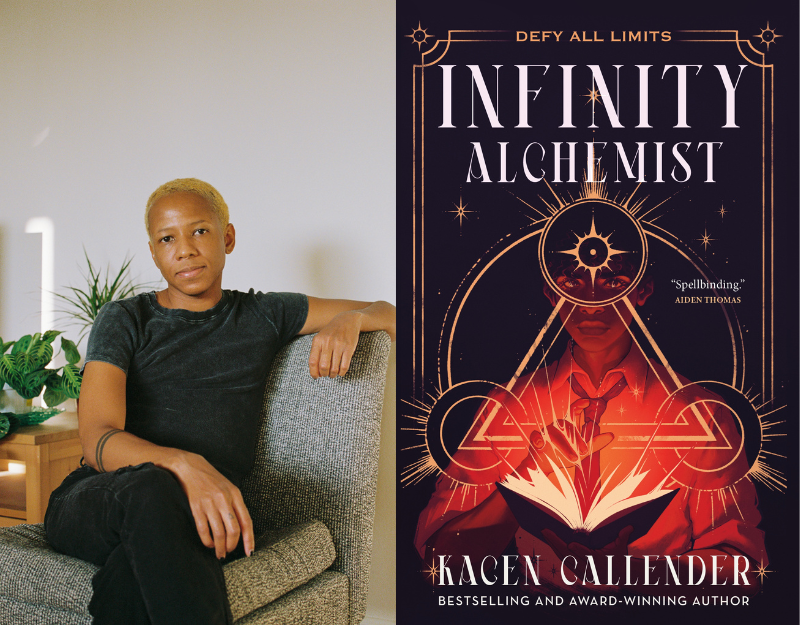
Another intriguing review, Betsy… I don’t expect every book I read to have a United Nations of characters–in fact, it puts me on guard–but you’d expect more diversity in a book about NYC. I like that you have pointed out something all the journal reviews have managed to ignore so far. Though kudos (I think) to Kirkus for using the word “kick-ass” in its review! 🙂
Yeah, well I tried to mention that I usually don’t expect, as you say, a “United Nations of characters” in a fantasy novel. Percy Jackson and Harry Potter don’t bother me too much. I think it was the use of real-life historical figures in New York making the city appear to be almost entirely historically white that got my goat. I don’t expect everyone to agree, of course, but it’s probably something many white reviewers will miss.
One little quibble here: I just finished the massive – and massively brilliant – Ron Chernow bio of Alexander Hamilton, which defends him very convincingly on a long set of historical charges of… well, slimy fish-ism.
Along with authoring the bulk of the Federalist (not only helping sell the Constitution to his wary contemporaries but to every generation since) Hamilton established the economic system that allowed the country to recover from the financial costs of the Revolution. He fought tooth and nail to keep the scarier peasants-with-pitchforks aspects of the French Revolution from establishing themselves on this side of the Atlantic (mostly against Jefferson and his faction). He has another important claim on 21st-century hearts as well: he’s one of very few founders with even a remotely defensible record on slavery.
Not saying the man was a little plaster saint – he most emphatically was not – but I defy anyone to read Chernow without coming away with a whole new appreciation for his contributions (the audio book is top-notch, too).
Burr, on the other hand… well, slime away.
And yay, Brandan Dornan!
I mean: yay, Brandon Dorman.
The ending you describe (regarding teh Indians) is APALLING. I mean, how on earth did that not set off all kinds of red flags with the editor?
And the fact that all the dead famous people of NYC are white is just…so ridiculous that it’s almost funny, but just comes off as sad and distorted.
I just got the book Betsy and plan to include it in a column for July. I was struck by Zelda Fitzgerald as well – only in that I don’t see her as a NYC character so much (I would have expected her more in a southern book with a similar premise.) I was looking for Billie Holiday although you are right about Madame CJ Walker. I also was puzzled when I saw the cast and Langston Hughes, Duke Ellington, etc. were missing. The entire Harlem Renaissance seems not to be included. How could Aaron Burr (a historical figure true, but not a well known one) endure when someone like Hughes has not?
I am troubled by this – bothered by it in fact – but will wait until the book is fully read to do more than comment here.
Thanks for writing this…..
There was a lot I left out of the review just out of necessity. I thought about mentioning that there were only two women on the Council of Twelve and that they said relatively little, but that seemed like overkill when added to the rest of the review. I too noticed the absence of Harlem, and had hoped it see it in some fashion. I can only assume that the author was trying to avoid controversy since a lot of these dead gods don’t come off so well in their planning and decisions.
I don’t know – Zelda Fitzgerald as a more positive role model than Holiday or Walker? She wasn’t exactly the sanest person in the world…. 🙂
Is it relevant to ask, when is the novel set? The gods in 1931 (can’t be earlier, if the Empire State Building is on the cover, I’m figuring) would be different than the gods in 2008, I imagine. Doesn’t make it perfect, but within the logic of the book there might be a certain sense there.
That would be a good point except that Rory is a contemporary kid. No rules are given about time. Mebus avoided anyone too contemporary but even if there was a 1931 cutoff that still wouldn’t exclude Harlem.
I love this book. I can’t beilive you all hate this story so much. Why do you guys go looking for things that are wrong with a great story? And regarding keeping the Munsees trapped be racist, do you think its racist to keep a hispanic kid in juvie untill (s)he has cooled off? I dont.